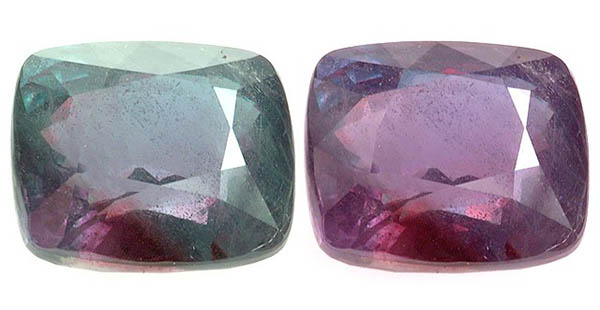Back in the early 1830s, a renowned Finnish mineralogist named Nils Gustaf Nordenskiöld was perplexed by a mineral sample he had received from Count Lev Alekseevich Perovskii, a Russian nobleman and fellow mineralogist.
Sourced in Russia's Ural Mountains, the curious green gem seemed to be an emerald, but something was not right. Emeralds have a hardness of 7.5 to 8.0 on the Mohs scale, and this Russian gem was rating an 8.5.
Later in the evening, he inspected the same stone under candlelight and was surprised to see that the gem's color had transitioned from a teal green to a raspberry-red.
The mystery was solved. Nordenskiöld (1792-1865) had stumbled upon a brand new color-change variety of chrysoberyl that was an emerald by day and a ruby by night. But now it needed a name…
The Finn recommended “diaphanite” — from the Greek "di," meaning two, and "aphanes," meaning unseen, or "phan," meaning to appear or show.
But Nordenskiöld's suggestion would soon be overruled by Count Perovskii (1792-1856), who sought favor with the Russian Imperial Family.
In 1834, the color-change gem with the working title of "diaphanite" would take the official name of "alexandrite" in honor of the 16th birthday of Alexander II, the future Russian tsar.
Today, alexandrite is prized for its unique characteristics, beauty and rarity. It is also one of the official birthstones for the month of June, alongside pearl and moonstone.
The color-change gem wasn’t included on the original modern birthstone list, which was published in 1912 by the American National Retail Jewelers Association, now known as Jewelers of America. Alexandrite, along with citrine, tourmaline and zircon, were added in 1952. The list remained untouched until 2002, when tanzanite became an official birthstone for December. In 2016, spinel joined peridot as a birthstone for August.
The color-changing property of alexandrite that allows it to exhibit a raspberry-red color under incandescent light and a teal green color when illuminated by daylight has been attributed to the presence of chromium in the gem’s chemical makeup. The chromium allows the gem to absorb light in the yellow and blue parts of the spectrum.
In addition to Russia, alexandrite has been sourced in Brazil, Sri Lanka, Tanzania, Madagascar, Zimbabwe, India and Myanmar.
Credits: Nils Gustaf Nordenskiöld image by Nils Gustaf Nordenskiöld, Public domain, via Wikimedia Commons. Alexandrite images by User: at en.wikipedia, CC BY-SA 3.0, via Wikimedia Commons.


